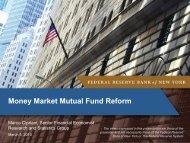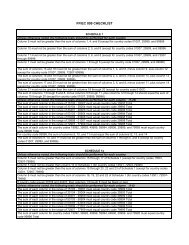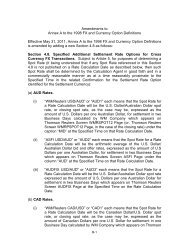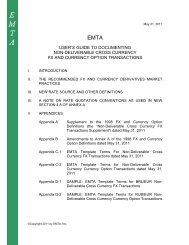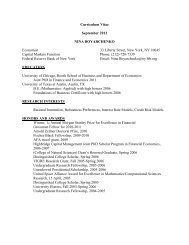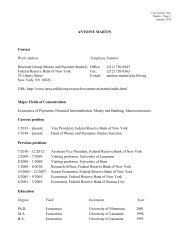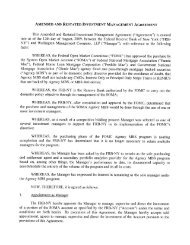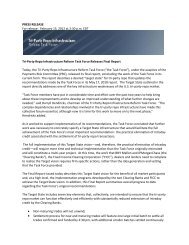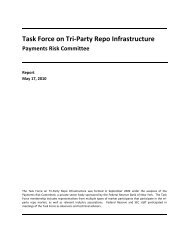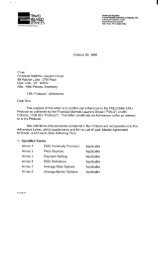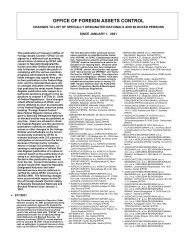Residential Foreclosures in the City of Buffalo, 1990-2000 - Federal ...
Residential Foreclosures in the City of Buffalo, 1990-2000 - Federal ...
Residential Foreclosures in the City of Buffalo, 1990-2000 - Federal ...
Create successful ePaper yourself
Turn your PDF publications into a flip-book with our unique Google optimized e-Paper software.
Subprime Lend<strong>in</strong>g<br />
Subprime lenders <strong>in</strong> <strong>Buffalo</strong> orig<strong>in</strong>ated slightly more than one-fifth <strong>of</strong> all<br />
foreclosures <strong>in</strong> <strong>2000</strong>. Two-thirds <strong>of</strong> <strong>the</strong> foreclosures attributable to subprime lenders<br />
occurred on ref<strong>in</strong>ance mortgages, while a third were associated with purchase mortgages.<br />
Two low-<strong>in</strong>come m<strong>in</strong>ority communities exhibited an exceptionally high share <strong>of</strong><br />
foreclosed loans orig<strong>in</strong>ated by subprime lenders: Ellicott-Masten (45 percent) and East<br />
Side (36 percent). This result is consistent with research show<strong>in</strong>g that subprime lend<strong>in</strong>g is<br />
more prevalent among m<strong>in</strong>orities. However, this association between subprime<br />
foreclosures and socioeconomic characteristics does not hold true <strong>in</strong> all cases.<br />
Additionally, <strong>the</strong>re appears to be little relationship between overall foreclosure rates and<br />
subprime foreclosures, as <strong>the</strong> two communities with <strong>the</strong> highest foreclosure rates, North<br />
East and East Delevan, did not show high shares <strong>of</strong> foreclosures on subprime loans.<br />
Borrower Circumstances at Foreclosure<br />
Age <strong>of</strong> <strong>the</strong> Loan<br />
Overall, 39 percent <strong>of</strong> loans foreclosed <strong>in</strong> <strong>2000</strong> were young loans that moved <strong>in</strong>to default<br />
<strong>in</strong> less than four years, while 27 percent were seasoned loans older than eight years. The<br />
average loan was 5.8 years old at <strong>the</strong> time <strong>of</strong> default. Despite <strong>Buffalo</strong>’s high share <strong>of</strong><br />
foreclosures on young loans, 61 percent were more than four years old. Thus, <strong>the</strong> older<br />
foreclosures alone represented a significant growth <strong>in</strong> foreclosures over <strong>the</strong> <strong>1990</strong>s.<br />
The shares <strong>of</strong> loans that foreclosed <strong>in</strong> less than four years <strong>in</strong> <strong>the</strong> <strong>Buffalo</strong> communities <strong>of</strong><br />
Ellicott-Masten (59 percent), East Side (54 percent), and Riverside (52 percent) were well<br />
above <strong>the</strong> city’s overall share.<br />
Owner Tenure<br />
The average tenure <strong>of</strong> city homeowners whose loans foreclosed <strong>in</strong> <strong>2000</strong> was 8.6 years.<br />
<strong>Foreclosures</strong> were evenly distributed among short-, medium-, and long-tenure<br />
homeowners, suggest<strong>in</strong>g that <strong>the</strong> circumstances beh<strong>in</strong>d this aspect <strong>of</strong> foreclosures varied<br />
widely.<br />
6



